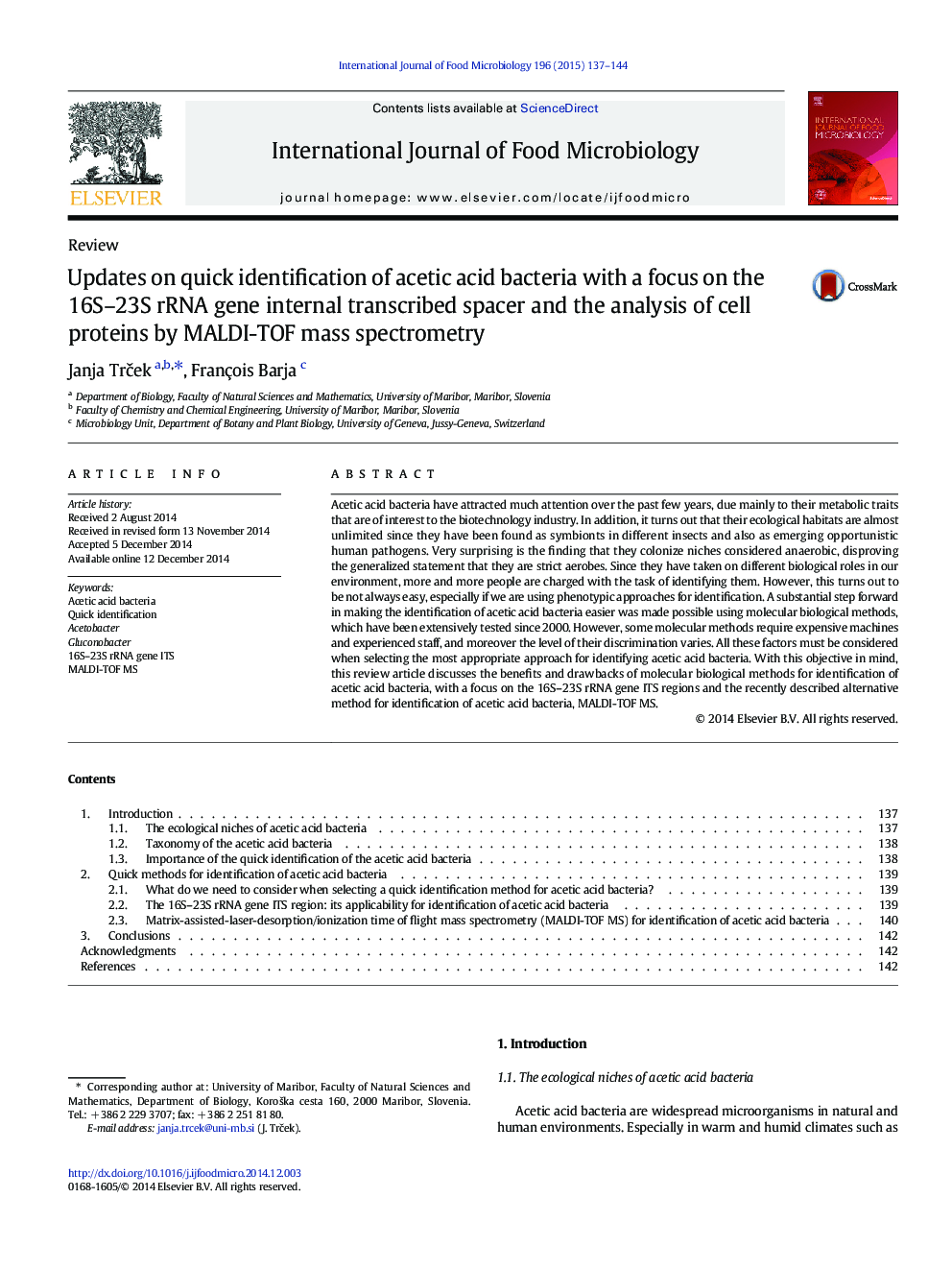| Article ID | Journal | Published Year | Pages | File Type |
|---|---|---|---|---|
| 4366769 | International Journal of Food Microbiology | 2015 | 8 Pages |
•Discusses the necessity for quick identification of AAB•Review ecological niches of AAB•Review current taxonomy of AAB•Compares the methods based on 16S–23S rRNA gene ITS and protein profiling (MALDI-TOF) for identification of AAB
Acetic acid bacteria have attracted much attention over the past few years, due mainly to their metabolic traits that are of interest to the biotechnology industry. In addition, it turns out that their ecological habitats are almost unlimited since they have been found as symbionts in different insects and also as emerging opportunistic human pathogens. Very surprising is the finding that they colonize niches considered anaerobic, disproving the generalized statement that they are strict aerobes. Since they have taken on different biological roles in our environment, more and more people are charged with the task of identifying them. However, this turns out to be not always easy, especially if we are using phenotypic approaches for identification. A substantial step forward in making the identification of acetic acid bacteria easier was made possible using molecular biological methods, which have been extensively tested since 2000. However, some molecular methods require expensive machines and experienced staff, and moreover the level of their discrimination varies. All these factors must be considered when selecting the most appropriate approach for identifying acetic acid bacteria. With this objective in mind, this review article discusses the benefits and drawbacks of molecular biological methods for identification of acetic acid bacteria, with a focus on the 16S–23S rRNA gene ITS regions and the recently described alternative method for identification of acetic acid bacteria, MALDI-TOF MS.
